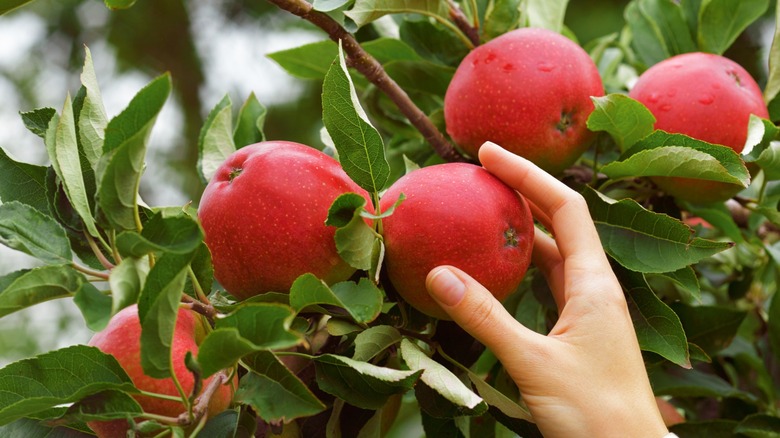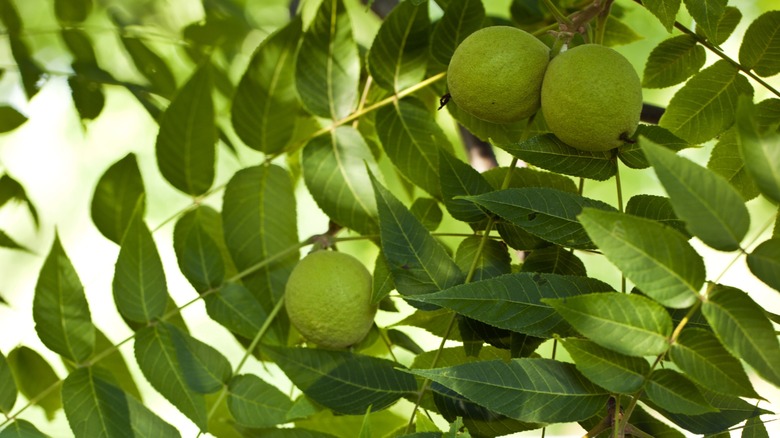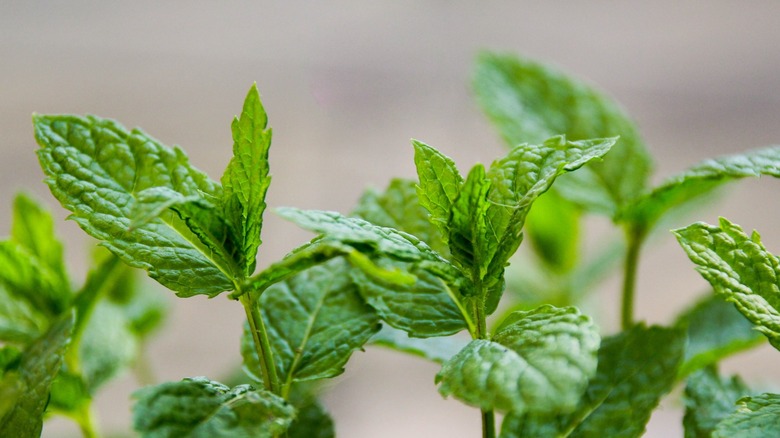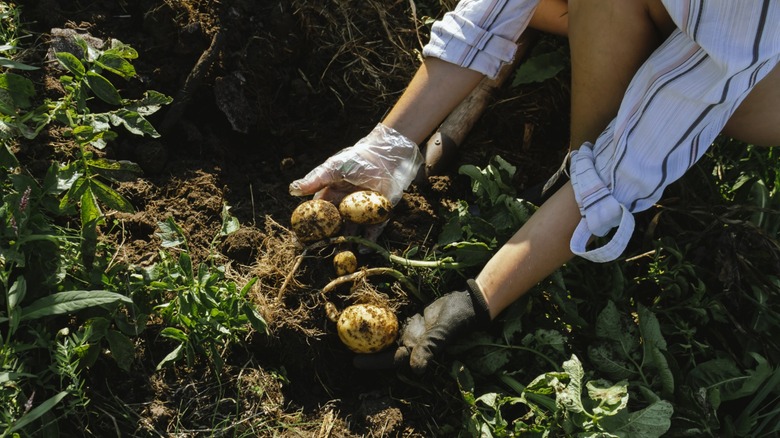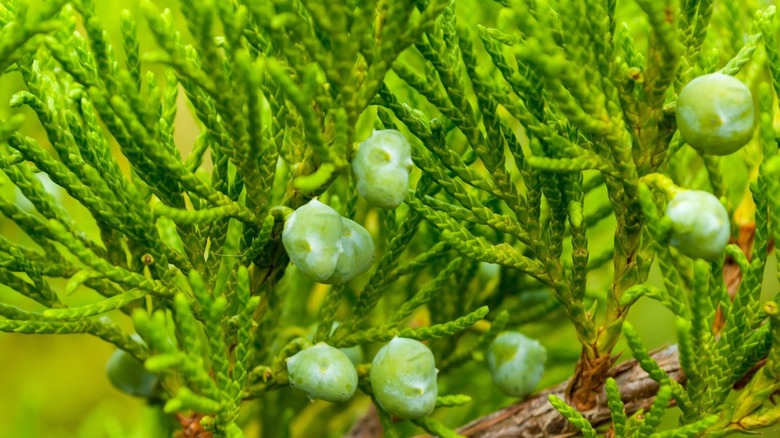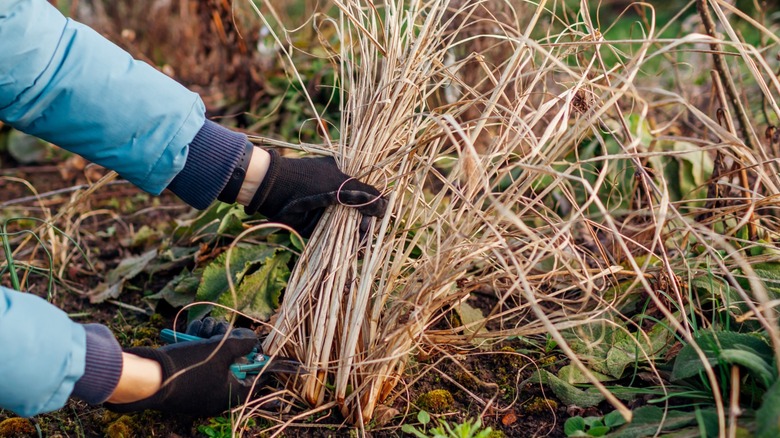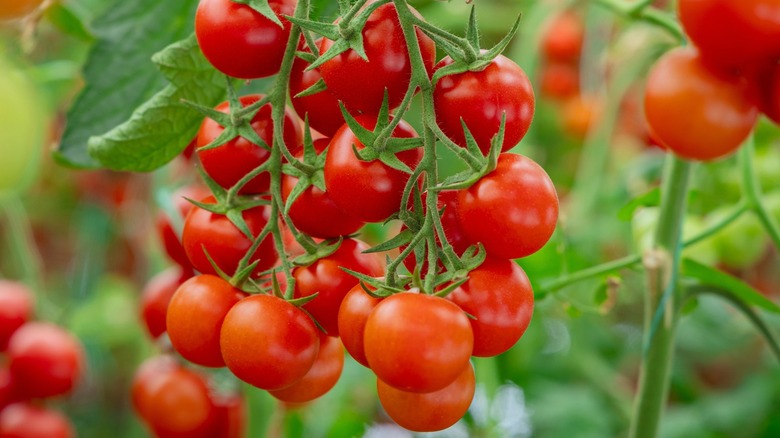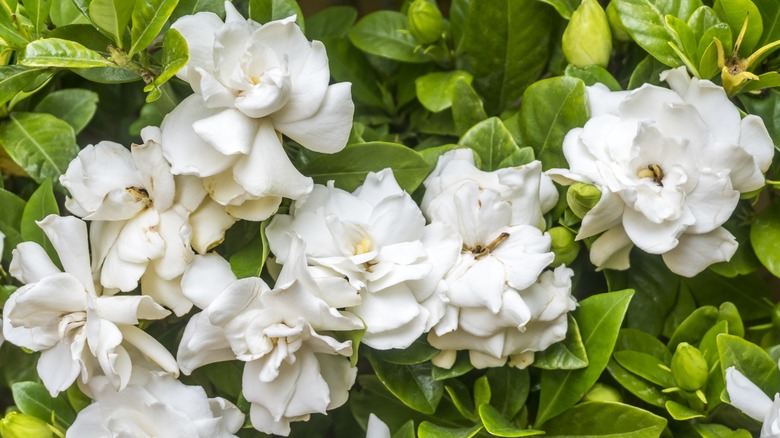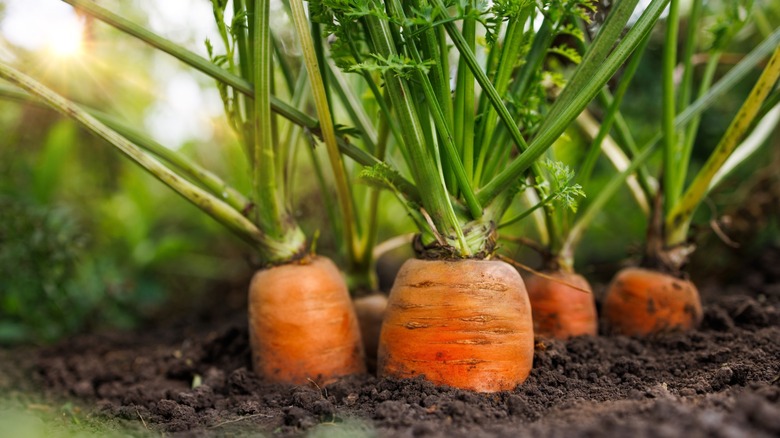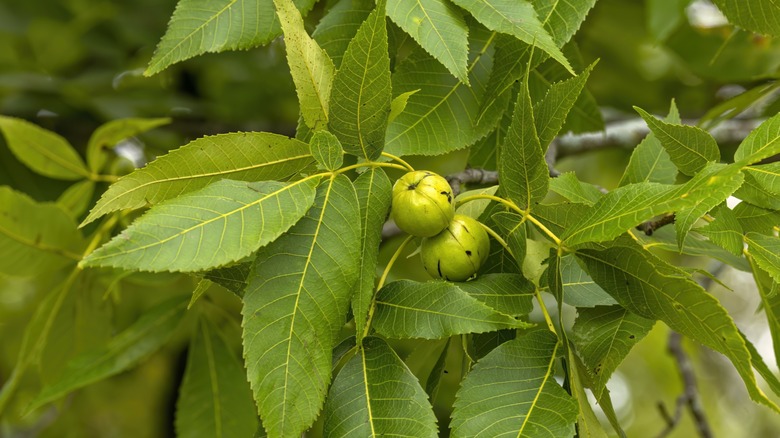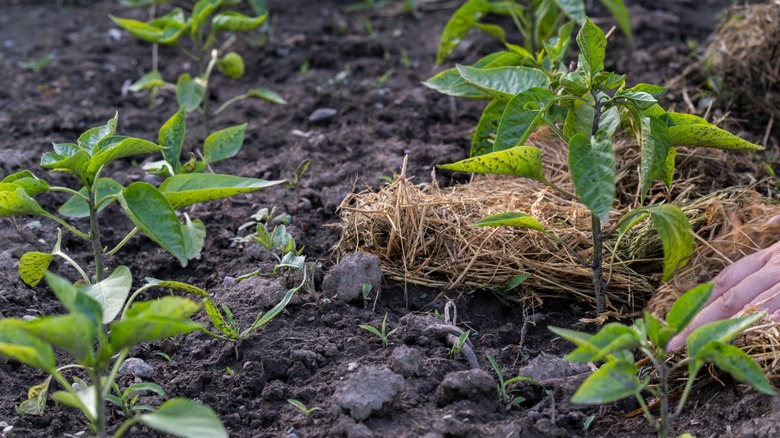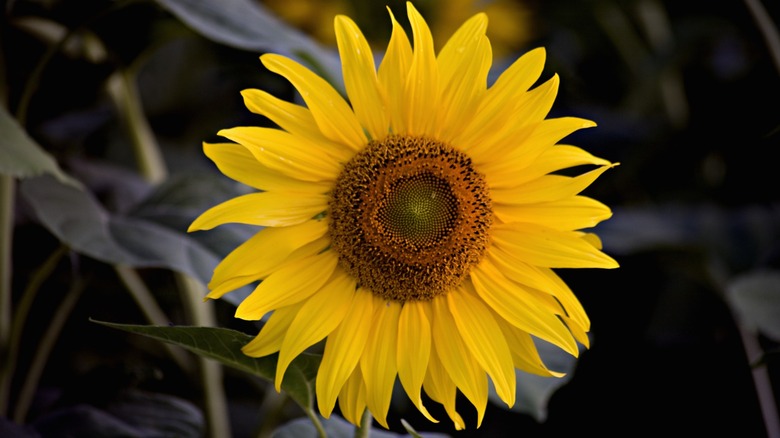12 Plants And Crops You Should Almost Never Grow Near Fruit Trees In Your Yard
Gardening is a pretty complex craft. There's a lot of strategy that goes into it. The type of soil, the kind of seed, and even the crops you pair on the land. If you've already got a healthy, beautiful fruit tree, there are some plants you should not even attempt to grow beside it. That's because fruit trees, like any other plant, are living, breathing organisms that interact deeply with their surrounding environment. What grows near them can very well affect their ability to survive and produce fruits.
Ordinarily, there are fruit trees you shouldn't grow in your house. However, for the ones that are fit for your yard, there are some plants and crops which you might even love growing, such as potatoes and tomatoes, that can quietly cause trouble by spreading diseases, hogging resources, or inviting pests that harm your trees. While strategic companion planting with herbs like comfrey or marigolds can boost your tree's health and productivity, the wrong neighbors can reduce your harvest drastically or introduce diseases that might take years to overcome.
When you make smart planting decisions, it can save you countless hours of troubleshooting and hundreds of dollars in treatments or replacements later. In this guide, you'll learn about some of the most problematic plants and crops that belong nowhere near your fruit trees. We'll explain why these plants can be destructive, how they affect your trees' health, and why something as common as mint or as pretty as a sunflower could spell trouble for your orchard.
Black Walnut
Black walnut trees (Juglans nigra) make poor neighbors for fruit trees because of their allelopathic effects. They release a compound called juglone, a natural toxin that seeps into the soil through their leaves, roots, and fallen nuts. Juglone inhibits the growth of many plant species, including fruit trees like apples. The highest concentration is usually found under the tree's branches. When other sensitive plants nearby absorb it, they may stop growing altogether or slowly die. To avoid problems, it's best to keep at least 50 to 80 feet between a black walnut tree and any fruit trees in your yard.
Mint
Mint plants (Mentha spicata) may seem innocent with their fragrant leaves and culinary uses, but they're actually underground invaders that can seriously harm your fruit trees. These perennial herbs, which include aggressive varieties like peppermint and spearmint, spread rapidly through underground stolons (runners) that can quickly infiltrate your fruit trees' root zones and compete with them for water and nutrients, which can limit their growth. If you love having mint around for culinary purposes, grow them in containers placed well away from your fruit trees in your orchard, or use deep root barriers to prevent competition.
Potatoes
Potatoes (Solanum tuberosum) might be a staple in your garden, but they're not a good match for fruit trees like apples, peaches, or cherries because they can bring trouble in two big ways. First, these fruit trees can attract blight, which can spread to your potato crop and wipe it out, leaving both struggling. Second, potatoes have deep roots that can disturb the shallow, sensitive roots of fruit trees, competing for space and nutrients in the soil. It's best to plant potatoes far away from your yard to keep your fruit trees healthy.
Juniper
Juniper plants, particularly the eastern red cedar (Juniperus virginiana) and related species, should be kept far away from apple trees and other fruit trees in the rose family due to their role in spreading destructive rust diseases. These junipers serve as essential hosts in the life cycle of cedar-apple rust and other related diseases that can severely damage your fruit trees. When spring rains arrive, the fungal structures on juniper plants release spores that travel to nearby fruit trees, which could lead to significant leaf drop. This damage weakens fruit trees over time, reducing both fruit quality and quantity.
Grasses
Grass (Poaceae), when it grows too close to fruit trees, can undermine their health. Its dense root system competes aggressively for water and nutrients, and research shows this isn't something you can fix by simply adding more fertilizer. Studies have found that trees surrounded by grass take longer to bear fruit and often show stunted growth compared to those with clear, vegetation-free zones around their trunks. There's also a pest risk: unmowed grass can shelter rodents, which may girdle and kill trees during winter food shortages. Even regular maintenance adds to the risk. Lawnmowers and trimmers can accidentally nick the bark, creating wounds that open the door to disease.
Tomatoes
Tomatoes (Solanum lycopersicum) are a popular garden staple, but just like potatoes, growing them in close proximity to your fruit trees is not a good idea. They pose huge risks to fruits such as blueberries, cherries, grapes, or apples because these plants can pass harmful diseases like blight back and forth, putting your trees at risk of weakened growth and damaged fruit. If you would still like to grow them in your orchard, it's best you keep them at a safe distance from these fruit trees so they won't ruin your harvest.
Gardenias
The dangers of growing plants near fruit trees are not one-sided. Fruit trees can also hurt some flowers. Gardenias (Gardenia jasminoides 'Scentsation'), for example, are not a smart choice near fruit trees. Missed fruit from your trees can rot on the ground, releasing ethanol, a gas that gardenia blossoms can't handle. When this happens, the flowers quickly turn brown and drop off, losing their beauty in no time. To keep both your fruit trees and gardenias thriving, it's best to plant these fragrant blooms far away from where your fruit might fall.
Carrots
Carrots (Daucus carota subsp. sativus), just like other root vegetables, pose a significant risk to fruit trees, particularly young ones with developing root systems. Their deep roots can damage or disturb the shallow, fragile root systems that fruit trees depend on for nutrient and water uptake. This root disturbance can stress fruit trees, potentially reducing their growth rate, fruit production, and overall health. Even though carrots are smaller than crops like potatoes, they should still be planted at least 5 feet away from the base of fruit trees to provide a safe buffer zone.
Butternut
Butternut trees (Juglans cinerea), though less famous than their relative, the black walnut, still pose a significant threat to fruit trees due to their production of juglone. As we discussed earlier, this is a potent natural toxin found in their buds, leaves, and roots. While butternut trees produce somewhat less juglone than black walnuts, they can still cause the classic symptoms of juglone poisoning in sensitive fruit trees: sudden wilting and yellowing of leaves that cannot be reversed with additional watering, eventually leading to plant death. This toxicity occurs because juglone impedes essential plant processes such as respiration in susceptible species.
Pepper
As a member of the nightshade family, pepper (Capsicum) plants are not healthy for your fruit trees because they come with baggage. They are prone to pests and diseases that can easily spread to your fruit trees, putting their health at risk. Whether it's insects munching on pepper leaves or a disease jumping to nearby branches, the trouble can quickly affect your harvest. Knowing the threats they pose, you would want to keep them from the vicinity of your fruit trees.
Conifers
Conifers (Coniferophyta) are not ideal near your fruit trees because their large, aggressive root systems spread wide and compete for the same water and nutrients your fruit trees rely on, often leaving them undernourished and stressed. To make matters worse, conifers gradually acidify the soil over time, which is a problem for most fruit trees, as they prefer neutral to mildly acidic conditions. Between the nutrient competition and the shift in soil chemistry, you've got more than enough reason to keep conifers well away from your orchard.
Sunflowers
Last on our list are sunflowers (Helianthus annuus). They create multiple challenges when planted near fruit trees due to their unique combination of physical and chemical competition. These towering plants compete directly with fruit trees for crucial sunlight, potentially shading younger trees and reducing their photosynthesis. Beyond their physical presence, sunflowers are aggressive nutrient feeders that can deplete soil resources needed by developing fruit trees. What many gardeners don't realize is that they possess allelopathic properties, releasing biochemicals, including terpenes and phenolic acids, through their roots, stems, leaves, and flowers that actively suppress the growth of neighboring plants.
